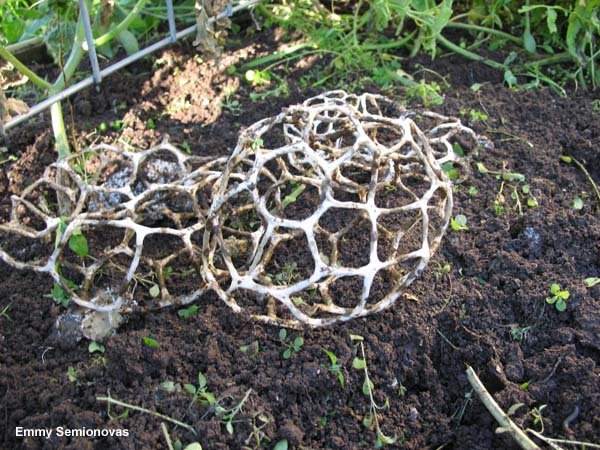Ileodictyon graceful (Ileodictyon gracile)
- Division: Basidiomycota (Basidiomycetes)
- Subdivision: Agaricomycotina (Agaricomycetes)
- Class: Agaricomycetes (Agaricomycetes)
- Subclass: Phallomycetidae (Velkovye)
- Order: Phallales (Merry)
- Family: Phallaceae (Veselkovye)
- Genus: Ileodictyon (Ileodictyon)
- Type: Ileodictyon gracile (Ileodictyon graceful)
:
- Clathrus white
- Clathrus graceful
- Clathrus gracilis
- Clathrus cibarius f. slender
- Ileodictyon food var. slender
- Clathrus albicans var. slender
- Clathrus intermedius

One of Australia’s most common merry birds, Ileodictyon graceful looks like a graceful, white cage. Unlike many similar mushrooms, it often breaks off from the base, which evokes some associations with tumbleweed, one wonders if it rolls like a tiny stinky wire ball through Australian fields? Edible Ileodictyon – A similar species that has thicker, softer membranes and is more common in New Zealand. Both species were introduced to other regions of the world (Africa, Europe, the Pacific Ocean) as a result of human activity.
Saprophyte. Grows singly or in groups on soil and litter in forests or cultivated areas, all year round in tropical and subtropical regions of Australia, Tasmania, Samoa, Japan, Africa and Europe.
Fruit body: Initially whitish globular “egg” up to 3 centimeters across, with white strands of mycelium. The egg does not burst gradually, but rather “explodes”, splitting, as a rule, into 4 petals. An adult fruiting body “jumps out” of it, unfolding into a kind of rounded checkered structure, from 4 to 20 centimeters in diameter, consisting of 10-30 cells. The cells are mostly pentagonal.
The bridges are smooth, slightly flattened, about 5 mm in diameter. At the intersections, obvious thickenings are visible. Color white, whitish. The inner surface of this “cell” is covered with a layer of spore-bearing mucus of olive, olive-brown color.
The ruptured egg remains for some time in the form of a volva at the base of the fruiting body, however, a mature structure can break away from it.
Smell described as “disgusting, fetid” or like the smell of sour milk.
Microscopic characteristics: Spores hyaline, (4-) 4,5-5,5 (-6) x 1,8-2,4 µm, narrowly ellipsoidal, smooth, thin-walled. Basidia 15-25 x 4-6 microns. Cystidia are absent.
Australia, Tasmania, Samoa, Japan, South Africa, East Africa (Burundi), West Africa (Ghana), North Africa (Morocco), Europe (Portugal).
The fungus is probably edible in the “egg” stage, while it does not yet have that specific smell that is characteristic of many adult fruiting bodies of the fungus.
As noted above, Ileodictyon edible is very similar, its “cage” is slightly larger, and the lintels are thicker.
As an illustration, a photograph from mushroomexpert.com is used.









